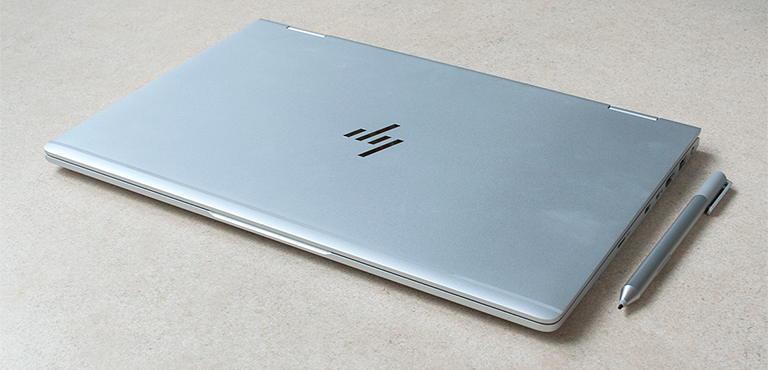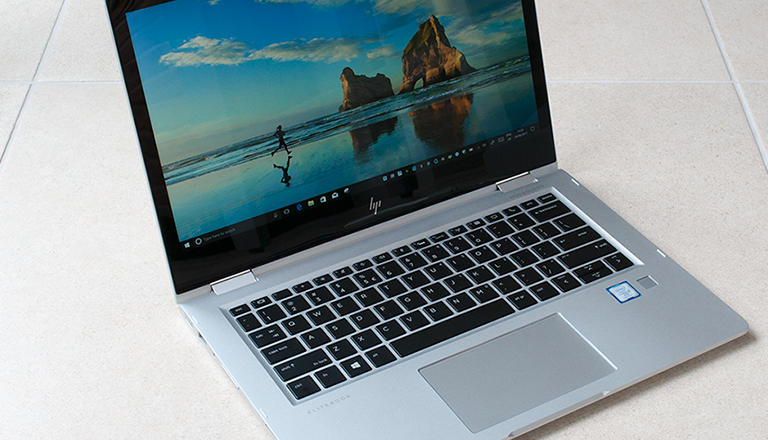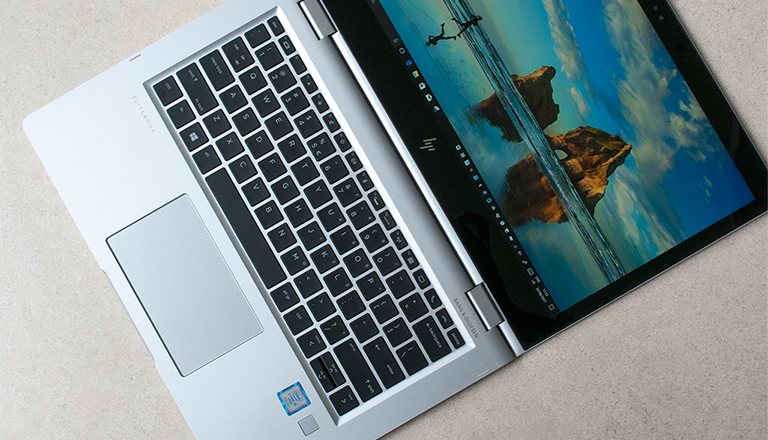Introduction
Want a high-quality business laptop? Lenovo's ThinkPad X1 Carbon has set the benchmark, but this is a fiercely contested area of the market, with multiple manufacturers eager to lock down lucrative enterprise contracts. HP is one of the biggest names in the business and has seen great success with an Elite line of PCs promising "a unique combination of durability, reliability, security and efficiency."
Striving to create "the world's most reliable computer," HP Elite PCs are subjected to severe temperatures, high altitudes, and drop tests you wouldn't want to try out at home. Testing is said to continue for more than 100,000 hours, resulting in products that offer genuine appeal to IT managers and road warriors alike, so while the likes of the Spectre x360 may hog the limelight, there's usually an Elite alternative for those demanding extra toughness.
One of the latest laptops to roll off the HP Elite product line is the EliteBook x360 G2. Priced from £1,380 and offering a 360° convertible design, this ultra-portable promises a well-balanced mix of versatility, performance and battery life in a seemingly bullet-proof package. First impressions are favourable as HP appears to have spared no expense on chassis design.
Beautiful, Powerful Business
Dimensions of 317mm x 219mm x 14.9mm and a weight of 1.28kg ensure that the system conforms to our thin-and-light expectations, but thin laptops are no longer hard to find. What's important here is that the EliteBook x360 G2's aluminium unibody frame has a suitably rock-solid feel, while the diamond-cut edges provide a premium finish. It looks like an expensive bit of kit and, seeing as it passes a dozen military standard 810G tests, you'd do well to cause any damage.
Beneath the stylish exterior, HP offers a choice of Intel Core i5 or Core i7 Kaby Lake processors, integrated Intel HD 620 graphics, up to 16GB of DDR4 memory, a selection of SSDs with varying capacities, and a 57Wh battery as standard. Everything you'd expect in a modern, ultra-portable PC, yet configuration options do vary between regions. Customers in the States can configure an EliteBook to their exact specification, with the option for a 4K display, but here in the UK there are only two full-HD configurations; a Core i5-7200U build at £1,380; or a Core i7-7600U system at £1,920.
Our test system, which isn't available in the UK, comes equipped with a Core i5-7300U processor, 8GB of DDR4-2133 memory in a dual-channel configuration and a 256GB SanDisk X400 M.2 SSD. The core specification ticks the right boxes, yet it is the EliteBook's versatility that really impresses. The laptop's left side carries a backlit power button, USB 3.1 Type-A, a headphone jack, volume rocker and smart-card reader, while over on the right there's a connector for the external power supply, a second USB 3.1 Type-A, HDMI output, a Kensington lock slot, USB 3.1 Type-C with Thunderbolt, and a microSD card reader.
There's no room for Ethernet, nor is there a USB-to-Ethernet adapter in the bundle, but HP does offer an optional USB-C Docking Station providing five USB ports, multiple display outputs and wired networking at a cost of £155. What you do get as standard is surprisingly powerful Bang & Olufsen audio, and both a touch fingerprint reader and a 720p IR camera supporting Windows Hello authentication. We enjoy face recognition as the preferred method of logging into Windows, yet the fingerprint reader is reasonably accurate and ties-in with a plethora of HP security utilities - more on those later.
Middling Display, Excellent Keyboard
If there's a weak spot, it is arguably the 13.3in, 1080p display. HP's bezels aren't the thinnest - Lenovo crams a 14in screen into a similarly-sized chassis - and the combination of glossy finish and relatively low full brightness make hard work of outdoor visibility. A shame, really, as the display is a very responsive Corning Gorilla Glass touchscreen whose usefulness is amplified by being able to rotate 360º. The lid lifts open with one finger, it can lay flat for conferencing, bend over to create a tent for media consumption, or fold fully to serve as a makeshift tablet.
In laptop form, the EliteBook x360 G2 is an excellent place to work due to HP's thoroughly enjoyable backlit keyboard. The big-name vendors have made giant strides in this area, and though I personally prefer the contoured, softer and quieter keys of the ThinkPad X1 Carbon, the EliteBook is a close second. As a nod to its target audience, HP has modified the function row to include shortcuts for Outlook Calendar and Skype for Business, and the keyboard is joined by a Microsoft Precision-certified trackpad that ranks among the best we've used on a Windows PC. It's spacious, responsive, never seems to click mistakenly, and also adept at handling multi-finger gestures.
The input devices are a major attraction and for an additional £50 customers can also add an HP Active Pen. Created by Wacom, the pen offers three buttons - two along the barrel, one on top - and each can be configured to a shortcut of your choice, meaning yes, the top button can quickly launch OneNote. We found the pen to be accurate and satisfying to use, and though it's arguably not as impressive as the Microsoft Surface Pen, it is a worthwhile accessory for anyone who appreciates Windows Ink. Better still, HP also provides a pen loop that slides into the smart-card reader to ensure you can keep the pen docked to the laptop when not in use.
Tablet Aspirations and Robust Security
There's plenty to admire, but the EliteBook x360 G2 isn't quite able to master every potential usage scenario. It's a great laptop, and the 360º display hinge is useful in a couple of ways, but as a tablet there are inevitable shortcomings. The keys, for example, don't sink into the tray when the screen is folded flat, so while the keyboard and trackpad are automatically disabled in tablet mode, the keys feel awkward in the hand. And there's also another proviso attached to the display, whose 16:9 aspect ratio doesn't lend itself to tablet use; a 3:2 Surface Pro is far superior in this regard.
Our criticisms are minor in the grand scheme of things, because this remains a great laptop with an excellent keyboard and trackpad, as well a usable tablet with a nifty pen. Plus if it's peace of mind you crave, HP offers a three-year warranty as standard and some of the most robust security packages in the business. One of the more intriguing options is a 'Sure View' filter, activated by pressing F2, that helps protect against visual hacking by reducing up to 95 percent of visible light when viewed at an angle, ensuring on-screen information can only be deciphered head-on. We sadly don't have the feature on our review sample, yet there are myriad of other security services to explore.
To give you a few examples, HP Sure Start Gen3 keeps tabs on in-memory BIOS and can recover the platform without user intervention, HP WorkWise partners with a mobile app to offer instant alerts if your laptop is moved, and HP Client Security can be used to lock down the system if an unauthorised user inserts a USB drive. Many of the security tools feel James Bond in nature, yet most of these features offer centralised management for enterprise, meaning your IT department can take care of it for you.













